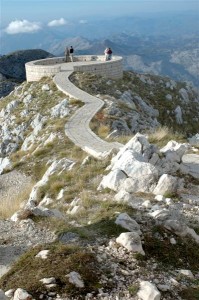
From the top of Mt. Lovćen, a symbol of Montenegrin freedom since the villages on its slopes were never been conquered by either Austrians or Turks, the whole of Old Royal Montenegro is visible.
Until not that long ago – only about 100 years – the whole of Montenegro was still a tribal society with groups of families united by clan and living in regions called nahijas. The oldest historical part of Montenegro, today referred to as Old Royal Montenegro, which was independent for centuries, was split into four such nahijas: Crmnička, Katunska, Riječka and Lješanska nahija.
Sadly, today, despite its incredible cultural and historical importance, its proximity to other major attraction (like the UNESCO World Heritage Site of Kotor and its famous bay, Skadar Lake National Park and the Ostrog Monastery) and its beautifully preserved environment, the Old Royal Montenegro district is disused, neglected and its local population is in serious decline.
But that may all be about to change thanks to a contract signed between the Delegation of the European Commission in Montenegro and the Centre for Sustainable Tourism Initiatives (CSTI).

Discussion
No comments yet.